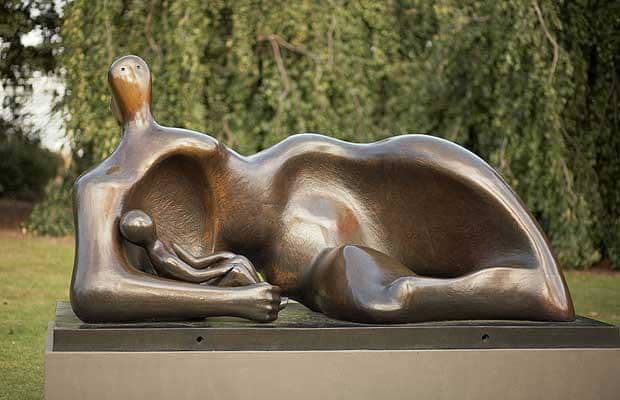The current art exhibition ‘Becoming Henry Moore’ at The Henry Moore Foundation Exhibition is striking for both its simplicity and sheer excellence. It is clear that Moore’s work speaks for itself, and surrounded by his various influences and those he influenced through his own artistry, it is a stunning comparison; however, this does not belie the undercurrent of the effort of the curators and all of those who helped with the arrangement.
The exhibition gives an insight into the mind and work of Moore’s creative trajectory, with dialogic parallels between Picasso, Rodin and Rembrandt, to name a few. The opening coincides with the museum’s foundation, highlighting the poignant reminder that Moore’s legacy ensures its longevity through its own brilliance. Moore’s focus on becoming a sculptor is blatantly obvious in his displayed early works; from wood, stone and plaster to marble, bronze and alabaster, the entire exhibit is a collaboration of masterful work. There is, however, a varied range of modes aside from sculpture. Portraits, sketches and drawings adorn the walls, subtly revealing that while such work may be less obvious, it certainly does not fade into obscurity. On the contrary, they reveal Moore’s progress from the young boy at Castleford to the ex-serviceman studying at Leeds School of Art (1919-21).

What was particularly striking was the copious creations, both portraits and sculptures, of nude figures. Neither obscene nor tasteful, each was a different expression of angles, curves and the complexities of the human form. In abundance was the female figure, often depicting a range of scenes with children, perhaps highlighting a significant influence within the maternal and the Madonna.
Speaking with the Head of Henry Moore Collections and Exhibitions, Sebastiano Barassi, he was keen to emphasise Moore’s global reach and the influences of his art: ‘Moore would have had access to print versions of Rembrandt’s work and there would have been reproductions within accessible publications. He spent a lot of time in the British Museum and likely found inspiration from there.’ Barassi was also enthusiastic about the significance of Leeds: ‘Moore came to study here in Leeds and it is clear that the city was influential in Moore’s work.’
While many of the pieces were striking, a particular favourite was the ‘Crouching Boy’ by Michelangelo di Lodovico Buonarroti from circa 1524. From the rest of Moore’s detailed sculptures, Michelangelo’s influence is starkly clear along with other similar artists featured in the exhibit like Auguste Rodin, John Skeaping, Leon Underwood, Henri Gaudier-Brzeska, Alexander Archipenko and Pablo Picasso. There are startling similarities, especially between a number of sculptures and sketches; alongside one another it is easy to trace Moore’s progress throughout his life and artistic career.

A wonderful exhibit, the Henry Moore Foundation excels in its presentation and performance of Moore’s talent. It was a pleasure to visit and explore the various pieces in the collection and would greatly recommend it to anyone who wishes to spend a few hours within the tranquil yet expressive space that the team of the exhibit have created. A particular commendation must go to them; their labour has most definitely paid off.
Stephanie Bennett
(Image courtesy of The Telegraph)

